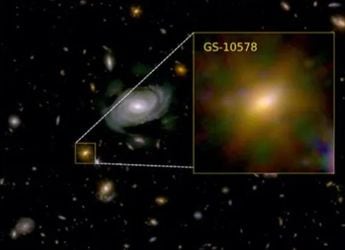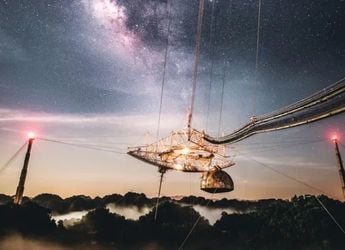- Home
- Science
- Science News
- Japan Probe Arrives at Asteroid After Nearly Four Year Space Odyssey
Japan Probe Arrives at Asteroid After Nearly Four-Year Space Odyssey
H-IIA rocket carrying Hayabusa 2 space probe
A Japanese space probe named after a falcon arrived at an asteroid 300 million kilometres from Earth on Wednesday after a three-and-a half year journey on a mission to seek the origins of life.
The Hayabusa 2 blasted off in December 2014 for the asteroid Ryugu on a pioneering mission to take samples that scientists hope will help reveal how life began. Its round-trip mission is set to take six years.
"Everything has gone as planned," a spokesman for the Japan Aerospace Exploration Agency (JAXA) told a news conference. "The probe has arrived at the asteroid".
Hayabusa 2, named for the peregrine falcon, will spend the next few months orbiting about 20 km above the asteroid and mapping its surface before landing. It will then use small explosives to blast a crater on the surface and collect the resulting debris.
Asteroids are believed to have formed at the dawn of the solar system and scientists say Ryugu may contain organic matter that may have contributed to life on Earth.
Television footage showed the control room erupting in applause as the probe's safe arrival was confirmed, with some researchers standing and grinning as they shook hands.
"We're mostly relieved, but now there's tension as to whether the main mission will go well," one official said.
Should all go according to plan, Hayabusa 2 is expected to spend around 18 months near the asteroid and return to Earth with samples at the end of 2020, the year Tokyo hosts the Summer Olympic Games.
The first Hayabusa probe was unable to collect as much material as hoped but still made history by being the first probe to bring back samples from a different asteroid.
Its seven-year mission ended in 2010 when it blazed a trail over Australia before slamming into the desert.
Success with Hayabusa 2 would help Japan's space programme move beyond a chequered past that included a 2016 accident in which the first of three planned military communication satellites was crushed during a flight from Japan to Europe's space port in French Guiana.
The first such satellite eventually blasted successfully into space in January 2017.
© Thomson Reuters 2018
Catch the latest from the Consumer Electronics Show on Gadgets 360, at our CES 2026 hub.
Related Stories
- Samsung Galaxy Unpacked 2025
- ChatGPT
- Redmi Note 14 Pro+
- iPhone 16
- Apple Vision Pro
- Oneplus 12
- OnePlus Nord CE 3 Lite 5G
- iPhone 13
- Xiaomi 14 Pro
- Oppo Find N3
- Tecno Spark Go (2023)
- Realme V30
- Best Phones Under 25000
- Samsung Galaxy S24 Series
- Cryptocurrency
- iQoo 12
- Samsung Galaxy S24 Ultra
- Giottus
- Samsung Galaxy Z Flip 5
- Apple 'Scary Fast'
- Housefull 5
- GoPro Hero 12 Black Review
- Invincible Season 2
- JioGlass
- HD Ready TV
- Laptop Under 50000
- Smartwatch Under 10000
- Latest Mobile Phones
- Compare Phones
- Samsung Galaxy A07 5G
- Vivo Y500i
- OnePlus Turbo 6V
- OnePlus Turbo 6
- Itel Zeno 20 Max
- OPPO Reno 15 Pro Mini 5G
- Poco M8 Pro 5G
- Motorola Signature
- Lenovo Yoga Slim 7x (2025)
- Lenovo Yoga Slim 7a
- Realme Pad 3
- OPPO Pad Air 5
- Garmin Quatix 8 Pro
- NoiseFit Pro 6R
- Haier H5E Series
- Acerpure Nitro Z Series 100-inch QLED TV
- Asus ROG Ally
- Nintendo Switch Lite
- Haier 1.6 Ton 5 Star Inverter Split AC (HSU19G-MZAID5BN-INV)
- Haier 1.6 Ton 5 Star Inverter Split AC (HSU19G-MZAIM5BN-INV)

















